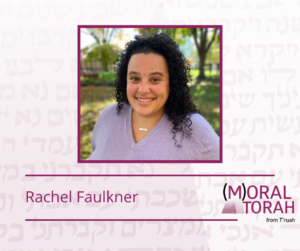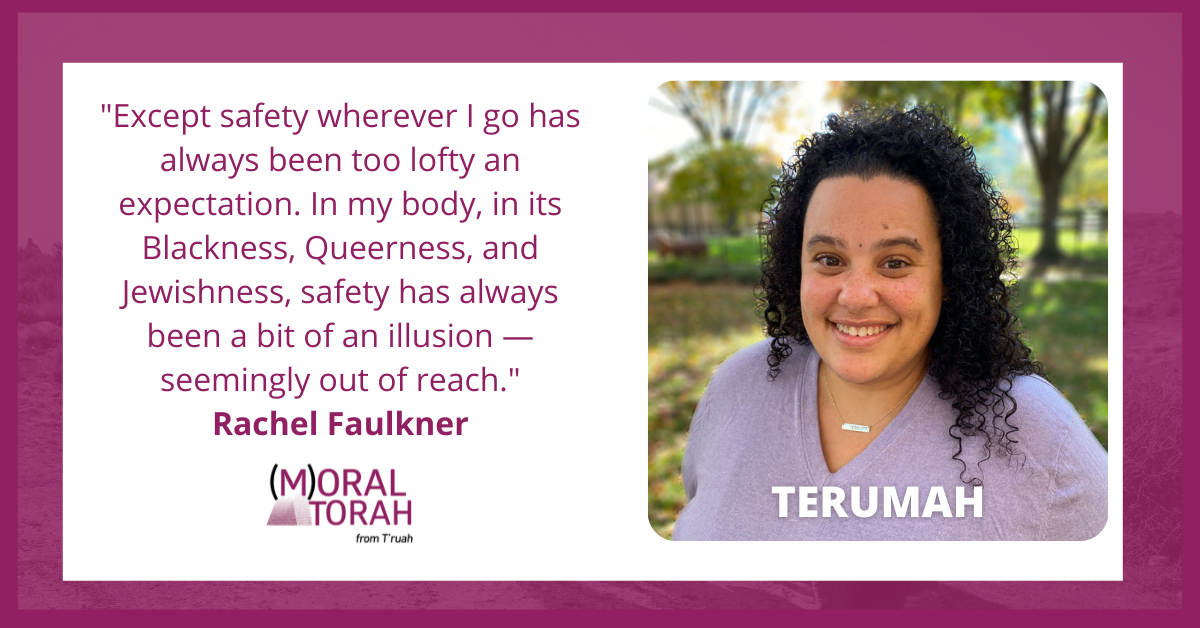A D’var Torah on Parshat Terumah by Rachel Faulkner
In this week’s portion, Terumah, Moses is given instructions for how to build a sanctuary. God says to Moses, “They shall make for Me a sanctuary, and I shall dwell amidst them.” (Exodus 25:8) Of course, the instructions are very detailed — there are several materials to be used, it must be ready to be dismantled and transported, there are specific patterns for all of its furnishings. All of these very specific details and instructions make total sense to me in some ways, and in other ways I find myself wanting to rebuff each and every detail.
In addition to being a communal meeting place, the sanctuary (and other ritual sites) were places of safety. In most cases, a person in danger could flee there and come under the protection of God, as evidenced in last week’s parshah. (Exodus 21:14 says that a heinous murderer may be taken “even from the altar” for trial, which indicates that any other person could not be removed from such sanctuary.) From the stories of Adoniyah (I Kings 1:50-53) and Yoav (I Kings 2:29-34) and their rebellions against King Solomon, we learn that this practice remained in effect hundreds of years later.
Sign up to receive (M)oral Torah in your inbox each week.
I understand the place of safety that we build our synagogue sanctuaries to be; I understand that more deeply after attacks like we just endured in Colleyville, Tex. When I am thinking about it through that lens, I want the detailed instructions it sometimes feels like only God can give us. And somehow even the most detailed instructions feel inadequate to me, because just like I want my sanctuary to be a place of safety, I would also need instructions for my home, my school, my grocery store, really everywhere I go. I want them all to be safe. Is safety wherever I go too lofty an expectation?
Except safety wherever I go has always been too lofty an expectation. In my body, in its Blackness, Queerness, and Jewishness, safety has always been a bit of an illusion — seemingly out of reach. Whether I’m in a synagogue where I’m assumed to be a stranger, or just driving down the road when a police officer assumes me to be a threat, my safety is never guaranteed. And so, the reality for me is that safety in sanctuaries is just a start for what a safe world looks like.
Find more commentaries on Terumah.

But if I’m being honest, it’s exactly where I want to start. I want our Jewish communal sanctuaries to be the refuge God intended them to be from the beginning, when we were given the instructions to make the space where God could dwell with us. I believe that creating safe Jewish sanctuaries takes these instructions and a commitment from us all: to center the voices of Jews of Color when it comes to establishing local communal safety practices. To combat our fear when it comes to making our spaces welcoming and inclusive for all. I imagine building the sanctuary to such specific guidelines was daunting for the Israelites, and building safe sanctuaries feels daunting right now to me, too. The good news, at least today, is that I think the process can start with just a conversation. Have you reached out to those in your community for whom safety is most often illusive to ask them how safety can feel within reach in your community’s sanctuary? As we enter Black History Month, I’d argue there is no better day than today.
Rachel Faulkner is Director of Community Investments at SRE Network. She is a member of the T’ruah board of directors.

